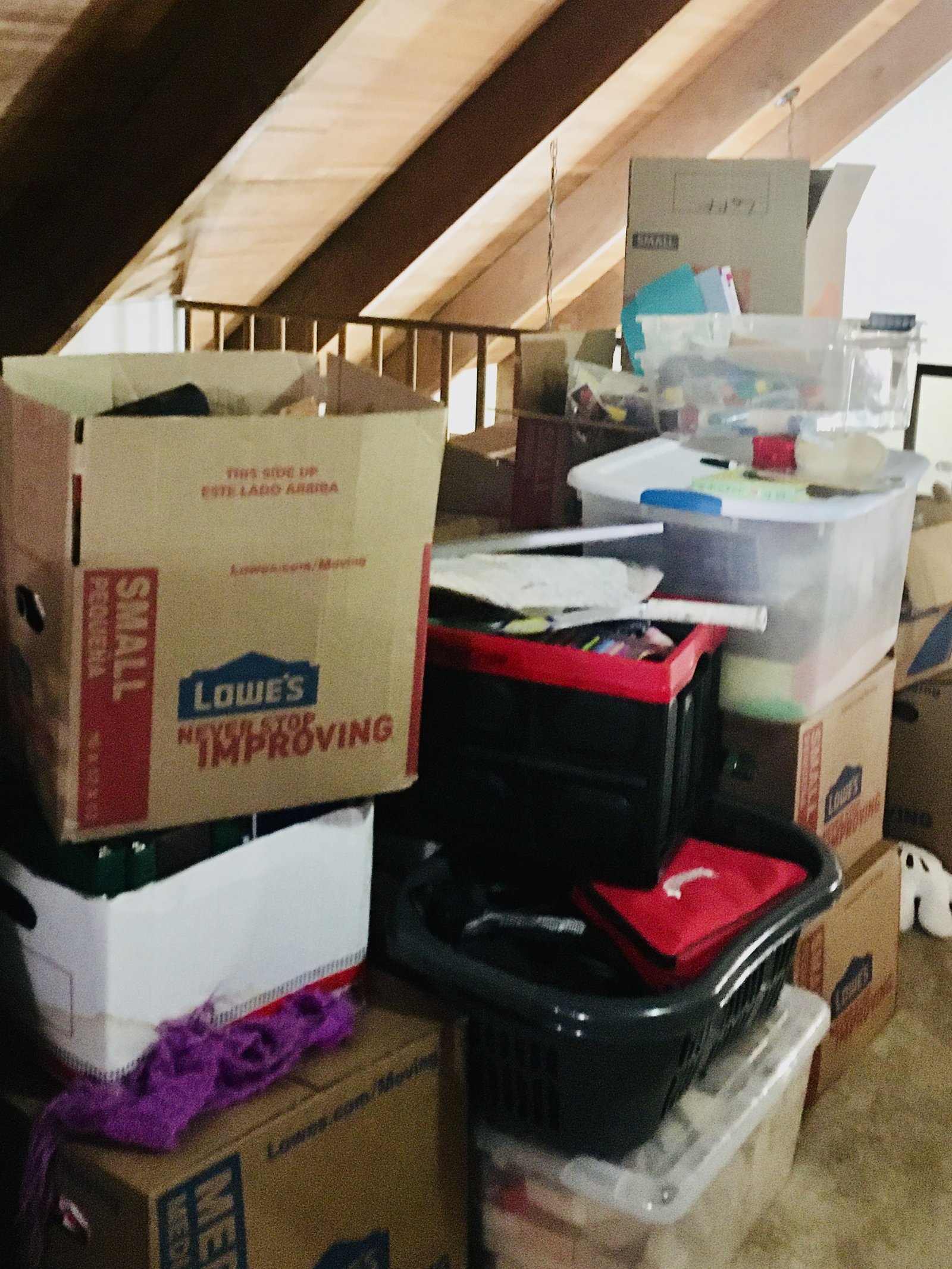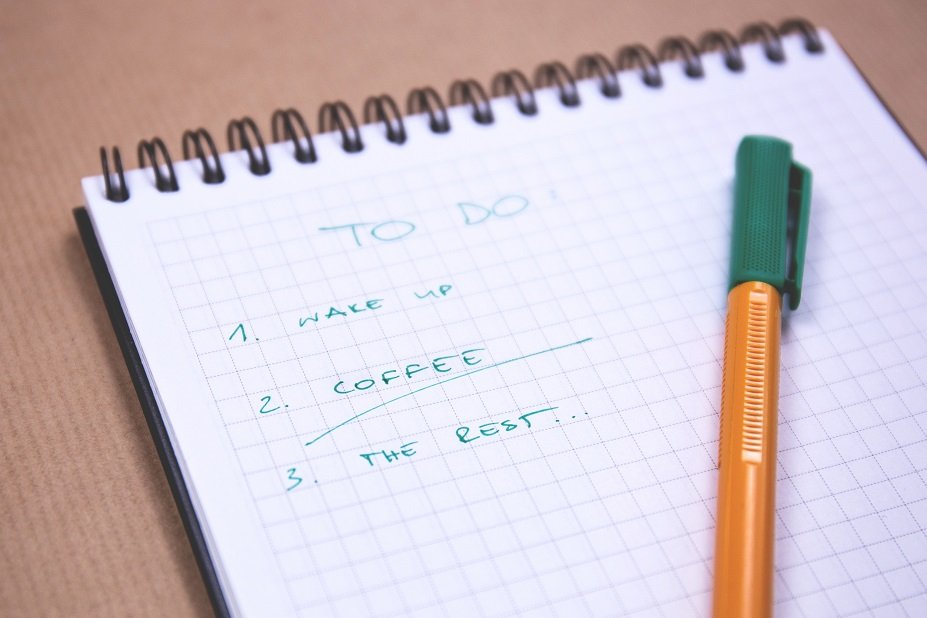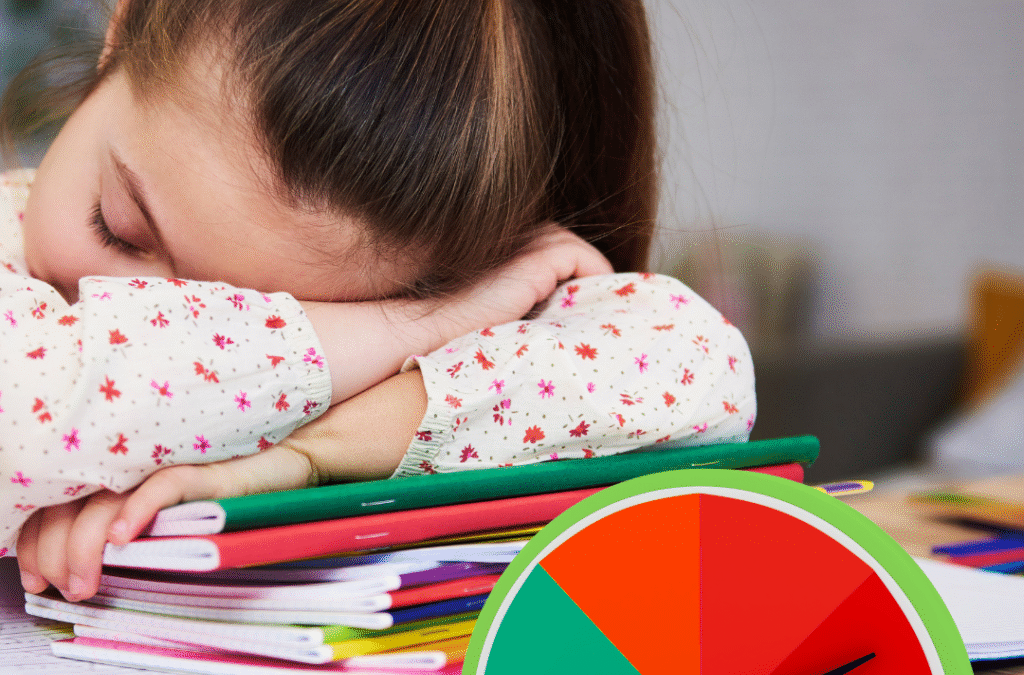Before we begin: This article is originally from 2019 and written about two months after my family moved into our current home. Below I mention that the house is still full of boxes at the time of writing. Please know, in the five and a half years since we moved, I have managed to unpack those remaining boxes. Just in case you were wondering 😉 Now, on to the discussion of Executive Function Disorder.
Have you been told that your child has executive function disorder but you don’t really understand what that means? Problems with executive function can occur in people with ADHD, autism, and other learning challenges and be very frustrating for parents and caregivers to understand. Executive function disorder is complex, but I want to try to explain it in a way that makes it easier to understand. Not all tasks present the same challenges to your child. Understanding how more executive functioning is needed for different tasks can help you understand your child and their struggles better.
But first, we are going to talk about me.
I have written before about how I have traits of ADHD, and how that sometimes makes things harder. Most of the time, as an adult, my executive skills work just fine. But not always. As a child, I struggled to get school work done or clean my room. Recently, we bought a house and moved across town. Every item I owned had to be put in a box, taken across town, and unpacked. For a person with executive function issues, this is a nightmare situation. Moving is like having to clean your room times 1,000, as far as the brainpower needed to get through it.
The task is huge and overwhelming. There was also a time limit involved, we had to get out of the old house by the end of the month. And we did get everything moved in time, with the help of some great friends. But, as I type this, my house is still full of boxes in several rooms. Which boxes are left and why is going to help me explain executive function disorder.
IF your mugs are not near your coffee maker, you set up your kitchen wrong.
 My favorite room to unbox, and the first one done, was the kitchen. Why? Not just because my new kitchen is bigger and prettier than my old one. And not just because the kitchen is important (food is essential). But because I could visualize what I wanted my new kitchen to be like.
My favorite room to unbox, and the first one done, was the kitchen. Why? Not just because my new kitchen is bigger and prettier than my old one. And not just because the kitchen is important (food is essential). But because I could visualize what I wanted my new kitchen to be like.
As a woman in my 40’s, I have not only been in many kitchens, I have cooked in them. I have cooked and cleaned kitchens at the homes of friends and family. I have struggled to figure out where everything goes in the kitchens of condos and houses we rented for vacations. Most kitchens follow a certain logic for where you put the cups, plates, pots, pans, and forks. Everything must have a place. And while there are decisions to be made, you can apply some logic to your decisions and figure everything out.
For example, my entire kitchen arrangement started with the coffee maker. Once the place of honor for the coffee maker was identified, logic dictated that the coffee mugs MUST go in the cabinet above it. Because those go together and hunting for a mug before coffee is a trial that no one should endure, including any company we might have.
Once I had the mugs in place, I knew the glasses went in the same cabinet. Then, the dishes would go in the other large cabinet beside the stove. Other elements of the kitchen fell into place, sometimes with a little test to see what fit where. Rarely used items go on top shelves, out of reach, and heavy pots go down in low cabinets so as to cause fewer concussions. Quickly, the kitchen is all unpacked and in working order.
But it isn’t always so simple.
 This is an example of when executive function is working well. It involves visualizing what you want to do and using logic and reason as needed to get the task done. These same skills are used every time we empty the dishwasher and put away the dishes, get ready for the day by showering and getting dressed, or complete many other tasks.
This is an example of when executive function is working well. It involves visualizing what you want to do and using logic and reason as needed to get the task done. These same skills are used every time we empty the dishwasher and put away the dishes, get ready for the day by showering and getting dressed, or complete many other tasks.
On the other hand, I have a lovely loft full of boxes. Why? This beautiful new room is going to be our school/game/music/guest room. But I don’t yet know how it is all going to fit. We didn’t have a room like this in our old home, and I’ve never seen a room set up the way I want this room to function. This means that I am struggling to visualize how the room should look when I am done unpacking. If I can’t picture it, I can’t make it happen.
There is no obvious place that is just right for things to go. There’s no logical starting point like in the kitchen. In the kitchen, the cabinets and stove all stayed in place and I worked around them, even with them, to make the room work. In this room, everything can be moved, and that is overwhelming. Because I am an adult, and I have some ideas for what I need, I am slowly trying to unpack and arrange things. I am coaxing order to emerge from the chaos. But it is much harder. Some days, I have been too tired or otherwise stressed to even touch that situation, and have avoided or ignored it altogether. Other days I have opened several boxes only to become overwhelmed and stop before I really make any progress.
This is what executive dysfunction is like. You can’t get started, so you don’t. Or you don’t know what needs to happen or how to cope or what the end goal is.
I need a plan of attack!
To get through this complex task, I need to know where I am going. I need a list of things I am going to do to get there.
In the kitchen, I knew I could just unpack one cabinet at a time and that would accomplish the task. I didn’t need a complicated plan. However, my large open room needs a multi-step plan. And building that plan is part of the executive function challenge. To actually get this task done, my best friend is probably going to come over and help me unpack. Her presence, help, and encouragement will help me break through my stagnation to get the job done. She will ask simple questions like “Can we put the books and bookcase over here?” and that will help me get started.
 I don’t need to be yelled at. I just need a little help. Maybe a lot of help. It isn’t that I lack motivation, but that I lack traction to get going. My executive function challenge here is sort of like having a car stuck in the mud. No matter how much I push the gas, the wheels are only going to spin, and I won’t make progress. My friend will provide help getting traction, so we get the task done. And I get moving instead of just spinning my wheels.
I don’t need to be yelled at. I just need a little help. Maybe a lot of help. It isn’t that I lack motivation, but that I lack traction to get going. My executive function challenge here is sort of like having a car stuck in the mud. No matter how much I push the gas, the wheels are only going to spin, and I won’t make progress. My friend will provide help getting traction, so we get the task done. And I get moving instead of just spinning my wheels.
If you can’t picture in your mind what the end looks like, you can’t get there.
For some kids, they can’t picture what it looks like to be “ready for soccer practice”. They forget which shoes they need to wear or to fill a water bottle. In situations like this, an actual picture of them with their uniform, gear, and cleats can help them remember what it looks like to be ready, and thus how to get there. Or they may not be able to picture where everything goes when their room is clean. A few pictures of what goes where that they can refer back to can help. Although cleaning a whole room is a complex task.
Many kids with executive function issues require a lot of help with getting through all the steps that need to be done. Because their minds don’t know how to make that list of tasks. Practicing tasks that require fewer steps, like putting away dishes or cleaning a toilet, are easier for kids with executive function issues. Providing help for complex tasks is necessary because the child’s brain can’t make its own plan, not because they are lazy.
Executive Functioning is a Skill to be honed.
 Creating a plan, following through, and dealing with deadlines or time constraints are hard for those with executive function disorder. However, those skills are often just delayed compared to their peers, and they do develop over time. It is a struggle when your 6-year-old still needs help like a toddler, the 12-year-old needs help like a 6-year-old, and at 18, they still need the level of help you expect to give in middle school. Personally, I still couldn’t take apart and list out all it took to clean a house as a 22-year-old bride, but eventually, I got it figured out. Mostly.
Creating a plan, following through, and dealing with deadlines or time constraints are hard for those with executive function disorder. However, those skills are often just delayed compared to their peers, and they do develop over time. It is a struggle when your 6-year-old still needs help like a toddler, the 12-year-old needs help like a 6-year-old, and at 18, they still need the level of help you expect to give in middle school. Personally, I still couldn’t take apart and list out all it took to clean a house as a 22-year-old bride, but eventually, I got it figured out. Mostly.
Just remember that your child’s brain will continue to grow and mature past the age of 18. Just because they are behind, that doesn’t mean they won’t eventually catch up or even succeed despite the struggles.
So to summarize, executive function is your ability to picture in your mind what needs to be done and work backward to create a list of tasks that you will do to get to that end goal. Then doing those tasks in the right order. This is a complex, high-level skill, that everyone develops at a different rate. Your ability to complete a task may even be dependent on whether you have done such a thing before or what you know about the task. Many adults struggle with creating a meal plan for the week, making the shopping list to go with that meal plan, buying the right groceries and following the meal plan. That set of tasks requires so much executive function and is so hard for so many people, that there are Apps designed to help you with that task.
Put yourself in their shoes.
 If you still aren’t sure you understand what it feels like to have executive function disorder, have your partner or spouse go purchase a Lego kit with at least 200 pieces (more if you are good at these kits). Have them take the Legos out of the box and any bags and put them in a baking pan. Tell them to take away the box, instructions and any other pictures and just tell you what the kit is supposed to make. Now, set a timer and try to build this Lego kit with no instructions or pictures in about 20 minutes and have your family grade your work when the time is up, as compared to the picture on the box that you never saw. Sounds pretty crazy, right? This is partially what it feels like to have executive function disorder.
If you still aren’t sure you understand what it feels like to have executive function disorder, have your partner or spouse go purchase a Lego kit with at least 200 pieces (more if you are good at these kits). Have them take the Legos out of the box and any bags and put them in a baking pan. Tell them to take away the box, instructions and any other pictures and just tell you what the kit is supposed to make. Now, set a timer and try to build this Lego kit with no instructions or pictures in about 20 minutes and have your family grade your work when the time is up, as compared to the picture on the box that you never saw. Sounds pretty crazy, right? This is partially what it feels like to have executive function disorder.
Kids and adults with executive function disorder may need help in different ways for different tasks. Pictures of the end goal, help getting started, or help to make a list of what tasks need to be done, are all ways that you can help. It is important to realize that not all tasks or people are created the same. What helps with getting chores done might not work for writing an essay. The task is different. Seeing an example, doing something alongside you several times, or looking at pictures of what to expect in a new situation are also options for helping your child cope. When executive function isn’t working well, it goes hand-in-hand with anxiety. So if you aren’t sure how to help with the executive function side, think about what you can do to make a situation less stressful or scary to reduce anxiety.





0 Comments